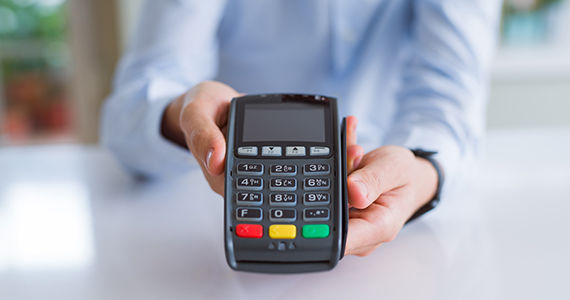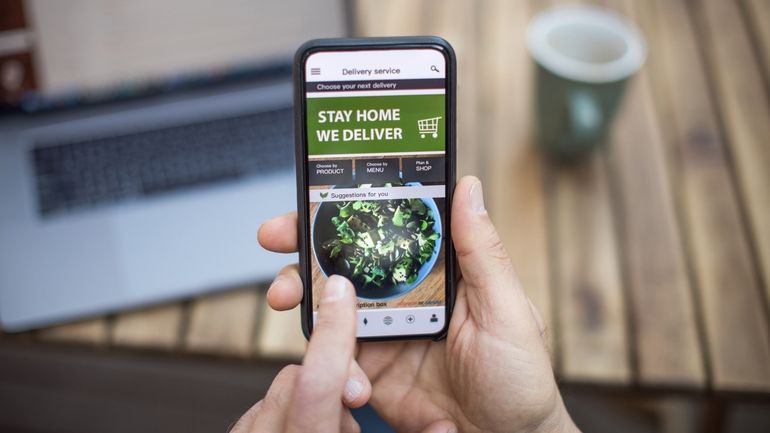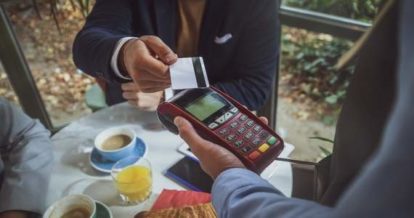As a restaurateur, you know your business needs to evolve with your customers to stay relevant – and that includes the way your guests order and pay for their meals. Your food may be a cut above your competitors’, but if your customer service is lacking, you could lose your guests to a restaurant that offers more convenience, such as the option to pay via card-not-present transaction.
Whether your restaurant accepts card-not-present transactions already, or you’re unsure about whether you should start, we can help you navigate the process in a straightforward and secure way that protects both you and your guests.
In this guide to card-not-present transactions, we’ll cover:
- Examples of card-not-present transactions in restaurants
- Why card-not-present transaction fees are pricier than card-present fees
- Why restaurateurs should accept these types of transactions, especially nowadays
- How to prevent card-not-present transaction fraud
Disclaimer: All of the information contained in this article is for informational purposes only and does not constitute legal, accounting, tax, or other professional or compliance advice. It is your responsibility to determine whether credit card surcharging is permissible in your jurisdiction. You are solely responsible for ensuring that your activity is compliant with the card network requirements and all laws applicable to you. Non-compliance may result in regulatory consequences or fines.

Find out which fees are negotiable and how to get the best price.
What Is a Card-Not-Present Transaction?
Not a fan of financial jargon? Let’s break down what a card-not-present transaction is in plain old English.
A card-not-present transaction is a payment that takes place when neither the cardholder nor their credit card are physically present at the time of a transaction.
There are many scenarios in which a card-not-present transaction may take place at your restaurant. Perhaps a guest recites their card number to you from memory (impressive) – or, more likely, they give you the number over the phone or pay for their order online. That is a card-not-present transaction.
On the other hand, mobile payment methods such as Apple Pay are not considered card-present transactions, because in this form of restaurant mobile payment, the credit card information is stored in your guest’s phone (a little like magic), so it is technically present.
Now that you’ve brushed up on the basics of card-not-present transactions, let’s dig into the pros and cons of this payment method for your restaurant.

What You Need to Know About Card-Not-Present Transaction Fees
While accepting card-not-present transactions may be a great way to enhance your guest experience, it’s a little pricier than your standard tap-to-pay sale. However, it’s worth the cost, and we’ll get to that!
Unless you run a cash-only business, you’re likely already familiar with credit card processing fees, which you incur every time a guest uses their card to pay their bill. These fees get split up between banks, credit card companies, and payment processing companies.
Processing fees may be a pain. But they’re a necessary part of doing business in today’s digital world. And, unfortunately, card-not-present transaction fees are higher than other payment processing fees because of the greater risk of fraud and chargebacks. These higher processing costs are set by the card brand networks such as Visa, Mastercard, and American Express. The payment processors must then account for these increased costs by charging higher rates.
For example, this comparison of Visa’s fees shows card-not-present charges at 2.4%, compared to 2.1% for swipe, dip, or tap transactions. Then you have to factor in the cost of bank fees and payment processor fees, in addition to the credit card fees.

Find out which fees are negotiable and how to get the best price.
How to Lower Your Credit Card Fees
Luckily, there are things you can do as a restaurateur to mitigate the higher cost of card-not-present transaction fees. For example, do your research and compare different payment processing fees upfront. Ask the payment processor you’re considering to price match before you sign on the dotted line for their service. Don’t be shy about asking questions and negotiating for the lowest fee possible.
Depending on where you’re located, some jurisdictions like New York City even allow restaurateurs to add a credit card surcharge to their guests’ bills, to help them recover the cost of processing fees. It’s important to note, though, that taking this approach may not be the best way to get a five-star review from your customers.

Why Restaurants Should Accept Card-Not-Present Transactions
Despite the cost of card-not-present transactions, it’s still a wise move to accept them at your restaurant. After all, the only constant in life – and business – is change.
For example, you may remember when credit card readers became more common than making cash sales. And then the trend went one step further in recent years with the rise of mobile credit card processing (letting your guests pay at the table).
Today, how credit card processing works in restaurants and the top payments trends are changing yet again.
In-house cashless transactions have become the preferred method of payment in most restaurants. In part, the increase in card-not-present transactions was driven by the pandemic. But this trend only continues to grow, with restaurant-to-consumer delivery estimated to reach $15.6 million in 2020.
Naturally, you want to keep your takeout enthusiasts happy until they’re ready to visit your restaurant again. An excellent way to do that is by giving them the option of online ordering via a card-not-present transaction.
Benefits of Online Ordering
Offering online ordering with integrated payments became extremely popular during the height of the pandemic and it remains a valuable revenue stream with big benefits your restaurant.
If you’re wondering whether online ordering is a good fit for your restaurant, let’s break down a few of the perks:
- Convenience for Your Guests: Online ordering allows your diners to order from their phone, tablet, or computer – they don’t even need to call you, let alone come into your restaurant.
- Greater Reach for Your Restaurant: You can add an order link to your website and share it on social media to make it even easier for your guests to discover.
- Safe Pick-Up and Delivery: Your guests can pay for their order online, which means you can offer no-contact pick-up and delivery, helping your staff and customers practice physical distancing and stay safe.
What Is Card-Not-Present Transaction Fraud and How Can You Prevent It?
As business shifts further into the digital realm and an increasing number of diners place orders online, restaurateurs need to be aware of the risks, including credit card fraud.
Credit card fraud occurs when payment information is stolen and used to make a purchase. This type of fraud can occur during both card-present transactions (for example, magstripe card purchases, which are known for being insecure payment methods) and card-not-present transactions.
Over 5% of Americans were victims of fraud in 2018, and the cost of fraud that year was staggering: nearly $15 billion. In addition, just over 3% of Americans were victims of card-not-present fraud.
Considering the risk, it’s important to know about the two different kinds of card-not-present fraud:
- When someone uses stolen credit card information online, over the phone, or through the mail.
- When the actual owner of a credit card uses the card to make a fraudulent chargeback. This means that the cardholder did actually enjoy every bite of that mouthwatering burger they ordered online from your restaurant, but they still called their bank the next day to demand a chargeback. Yes, these shady people do exist.

Who Is Liable for Card-Not-Present Fraud?
To fully understand the risks of card-not-present fraud, you need to understand your role in the process as a restaurateur.
For example, say one of your staff members receives a phone call for a takeout order in the middle of a busy dinner rush, and the customer insists on paying over the phone rather than when they pick up their food. Your flustered employee forgets to ask for the guest’s contact information or the three-digit CVV/CVC/CID number on the back of the card.
This is risky business because you are liable for any card-not-present chargebacks, unless you can prove that the guest who placed the order was the actual cardholder. And that’s pretty hard to do when you didn’t get their name.

Find out which fees are negotiable and how to get the best price.
5 Card-Not-Present Transaction Best Practices
As a savvy restaurateur, you likely already know that EMV technology is an excellent tool to prevent card-present transaction fraud.
But how can you actually stop card-not-present fraud?
Luckily, there are steps your restaurant can take to help avoid sketchy situations when you accept card-not-present transactions. Let’s dig into a few of these.
1. Become PCI Compliant
Security starts with your commitment to the process. Many restaurateurs nowadays gather and store customer information. If this applies to you, you should use a payment processor and POS that are PCI compliant to protect your business and your guests against fraud.
Becoming PCI compliant means you’ll need a firewall to protect your customers’ credit card information, strong password protection on your systems, up-to-date anti-virus software, and adherence to several other security protocols.
2. Always Ask for the CVV Code
Regardless of whether your restaurant is PCI compliant, go the extra mile and require your customers to provide the three-digit code on the back of their credit card when they place an order, so you can verify they actually have the card in front of them. Train your staff so they know to ask for this code whenever they take payments over the phone.
3. Use an Address Verification System
An address verification system (AVS) enables you to verify the cardholder’s billing address, which not only helps confirm that it’s accurate, but also means that your restaurant will have the information on file in case of a chargeback. Another bonus? Visa offers merchants a better rate for AVS transactions.
4. Ensure Your Third-Party Contracts are Airtight
Not all restaurateurs have their own delivery fleet to keep up with the increased demand for delivery orders. If you use a third-party online ordering delivery service like DoorDash or Uber Eats, ask what policies they have in place to prevent fraud, and ensure that your contract doesn’t hold you responsible if fraud does occur.
5. Use Mobile Payment
Even some of the purchases that happen within the four walls of your restaurant can be considered card-not-present transactions. For example, if you try to swipe a card and the magstripe doesn’t work, you may have to key in the card number, which counts as a card-not-present transaction.
One way to avoid this situation is by using a POS that enables your guests to pay with an app on their phone. Mobile payment methods are known for their high levels of security.

What Not to Do When You Accept Card-Not-Present Transactions
You’ve got a few tricks up your sleeve to help you process card-not-present transactions safely, so now let’s quickly run through a few card-not-present faux pas.
- Never ask for guests’ credit card information by email or text message.
- If you accept a credit card number over the phone, don’t write it down.
- If a transaction seems fishy to you, refund it and forfeit the sale. Don’t risk a potential chargeback.
A Smoother, Safer Ordering Experience
Now that you know what card-not-present transactions are, and you understand the benefits and the risks, you can work with a restaurant merchant services provider to offer this payment option to your guests with confidence. No doubt they’ll appreciate you for the convenient and secure service!
Learn how to save money on payment processing fees
Sign up for our free weekly TouchBistro Newsletter







